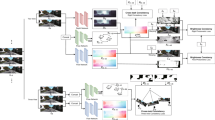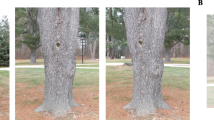Abstract
Existing computational models of structurefrom-motion — the appearance of three-dimensional motion generated by moving two-dimensional patterns — are all based on variations of optical flow or feature point correspondence within the interior of single objects. Three separate phenomena provide strong evidence that in human vision, structure-from-motion is significantly affected by surface boundary cues. In the first, a rotating cylinder is seen, though no variation in optical flow exists across the apparent cylinder. In the second, the shape of the bounding contour of a moving pattern dominates the actual differential motion within the pattern. In the third, the appearance of independently moving objects changes significantly when the boundary between them becomes indistinct. We describe a simple computational model sufficient to account for these effects. The model is based on qualitative constraints relating possible object motions to patterns of flow, together with an understanding of the patterns of flow that can be discriminated in practice.
Similar content being viewed by others
References
Kaplan GA (1969) Kinetic disruption of optical texture: The perception of depth at an edge. Percept Psychophys 6:193–198
Prazdny K (1985) Detection of binocular disparities. Biol Cybern 52:93–99
Ramachandran VS, Cobb S, Rogers-Ramachandran D (1988) Perception of 3-d structure from motion: the role of velocity gradients and segmentation boundaries. Percept Psychophys 44:390–393
Royden CS, Baker JF, Allman J (1988) Perceptions of depth elicited by occluded and shearing motions of random dots. Perception 17:289–296
Thompson WB, Mutch KM, Berzins VA (1985) Dynamic occlusion analysis in optical flow fields. IEEE Trans Pattern Anal Machine Intell PAMI- 7:374–383
Ullman S (1975) The interpretation of visual motion. MIT Press, Cambridge Mass
Wallach H, O'Connell DN (1983) The kinetic depth effect. J Exp Psychol 45:205–217
Author information
Authors and Affiliations
Rights and permissions
About this article
Cite this article
Thompson, W.B., Kersten, D. & Knecht, W.R. Structure-from-motion based on information at surface boundaries. Biol. Cybern. 66, 327–333 (1992). https://doi.org/10.1007/BF00203669
Received:
Accepted:
Issue Date:
DOI: https://doi.org/10.1007/BF00203669




